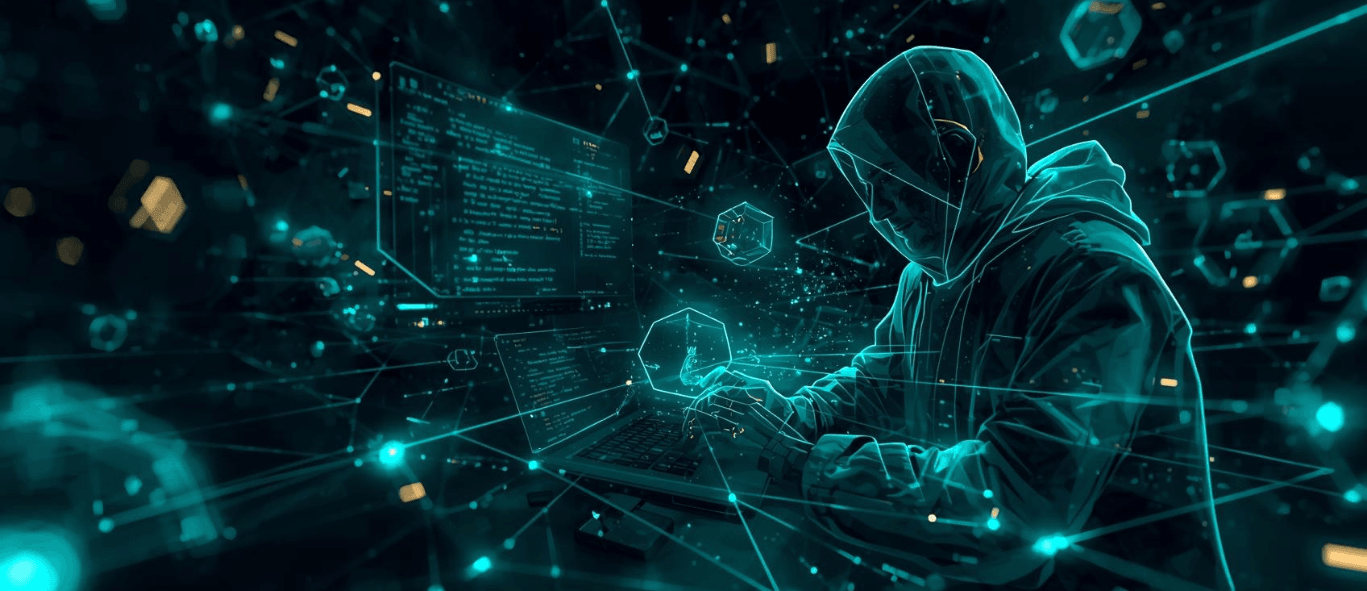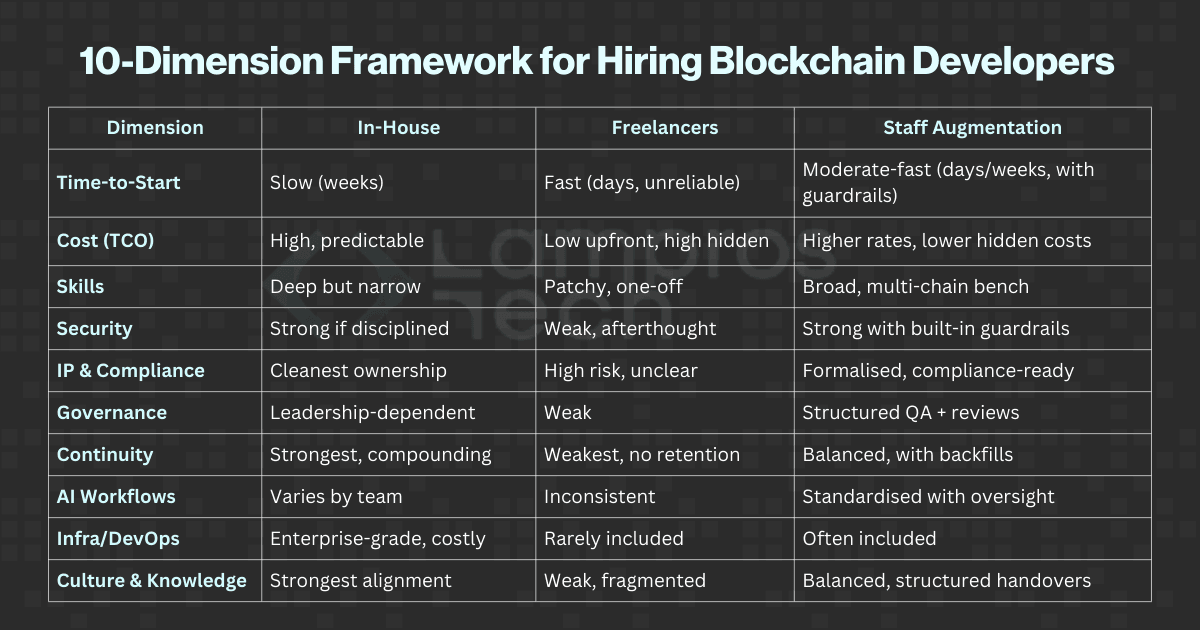Contact Us
If you're working on something real — let's talk.
Development & Integration
Blockchain Infrastructure & Tools
Ecosystem Growth & Support
© 2025 Lampros Tech. All Rights Reserved.
Published On Sep 03, 2025
Updated On Sep 03, 2025


Model | Time-to-Start | Limitations |
|---|---|---|
In-house | 5–7 weeks + onboarding | Slow start, continuity later |
Freelancers | Days if the scope is clear | Fast but fragile; audit risk |
Staff Augmentation | Days - 2 weeks | Faster usable delivery, depending on partner quality |
Model | Performance | Trade-Off |
|---|---|---|
In-house | High visibility, but costs rise with benefits, infra, retention | Expensive if roadmap shifts |
Freelancers | Lowest upfront cost | Rework and audit gaps increase real cost |
Staff Augmentation | Higher hourly rates, predictable outcomes with QA | ROI depends on the provider discipline |
Model | Performance | Trade-Off |
|---|---|---|
In-house | Strong depth in one stack | Weak breadth; slow to expand skills |
Freelancers | Plug niche gaps quickly | Poor integration across stacks |
Staff Augmentation | Access to multi-chain specialists | Dependent on bench strength |
Model | Performance | Trade-Off |
|---|---|---|
In-house | Security can be embedded into SDLC | Requires strong leadership, costly specialists |
Freelancers | Security is often treated as an afterthought | High audit failure risk |
Staff Augmentation | Guardrails built-in (reviews, audit prep) | Only as strong as the provider’s discipline |
Model | Performance | Trade-Off |
|---|---|---|
In-house | Clean IP chain, full control | Compliance is resource-intensive |
Freelancers | High risk unless contracts are airtight | Weak compliance culture |
Staff Augmentation | Formal contracts, compliance-ready | Varies; vet provider policies |
Model | Performance | Trade-Off |
|---|---|---|
In-house | Governance matches org leadership | Strong or weak, depending on the leads |
Freelancers | Minimal systemic governance | QA/reviews fall on you |
Staff Augmentation | Built-in reviews, SLAs, QA | Relies on the provider enforcing discipline |
Model | Performance | Trade-Off |
|---|---|---|
In-house | Strongest continuity | Risky if turnover is high |
Freelancers | Weakest continuity | Context is lost when they roll off |
Staff Augmentation | Backfills reduce risk | Still depends on integration with the core team |
Model | Performance | Trade-Off |
|---|---|---|
In-house | Adoption depends on leadership | Risk of over-reliance without governance |
Freelancers | Inconsistent AI use | No accountability for errors |
Staff Augmentation | Guardrails for AI integration | Partner maturity defines quality |
Model | Performance | Trade-Off |
|---|---|---|
In-house | Can build enterprise-grade infra | Expensive to maintain |
Freelancers | Rarely covers infra | Ops gaps surface late |
Staff Augmentation | Often includes DevOps expertise | Depends on the firm’s depth |
Model | Performance | Trade-Off |
|---|---|---|
In-house | Strongest cultural alignment | Vulnerable if documentation lags |
Freelancers | Weakest alignment | Minimal handover, repeated onboarding |
Staff Augmentation | Balance of integration + partner standards | Relies on the provider enforcing knowledge transfer |

Growth Lead
FAQs

The best way to hire blockchain developers in 2025 depends on your project’s needs. In-house teams give continuity, freelancers provide speed for prototypes, and staff augmentation offers balanced delivery with governance and audit readiness.

Freelancers are fast and cost-efficient upfront but often struggle with continuity and audit readiness. In-house blockchain teams provide stronger security and cultural fit but are slower and more expensive to scale.

Staff augmentation helps blockchain projects combine flexibility with governance. It embeds vetted engineers directly into your team, reducing audit risk, supporting multi-chain integrations, and ensuring delivery without long hiring delays.

Key factors include time-to-start, total cost of ownership, skill depth and breadth, security posture, governance, continuity, AI workflows, infrastructure maturity, and cultural fit. Using a framework helps avoid costly hiring mistakes.

Lampros Tech’s Scale with Dev program embeds experienced blockchain engineers into your repos and governance processes. It combines the flexibility of freelancers with the guardrails of in-house teams, ensuring your project is secure, audit-ready, and delivered on time.